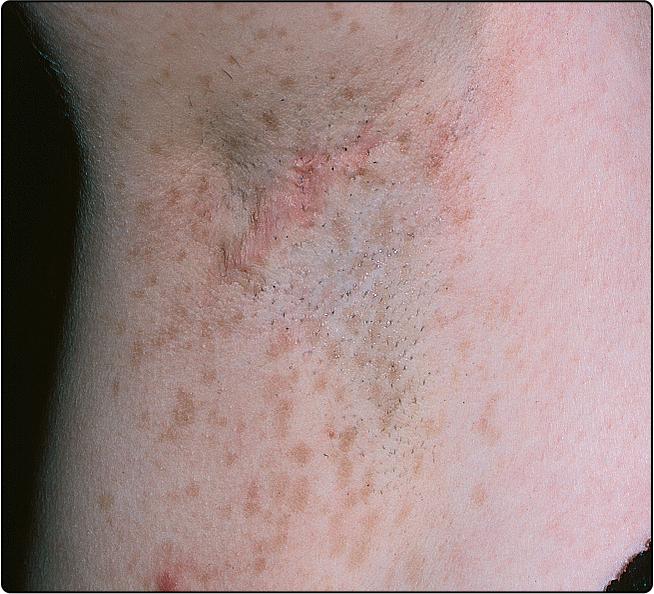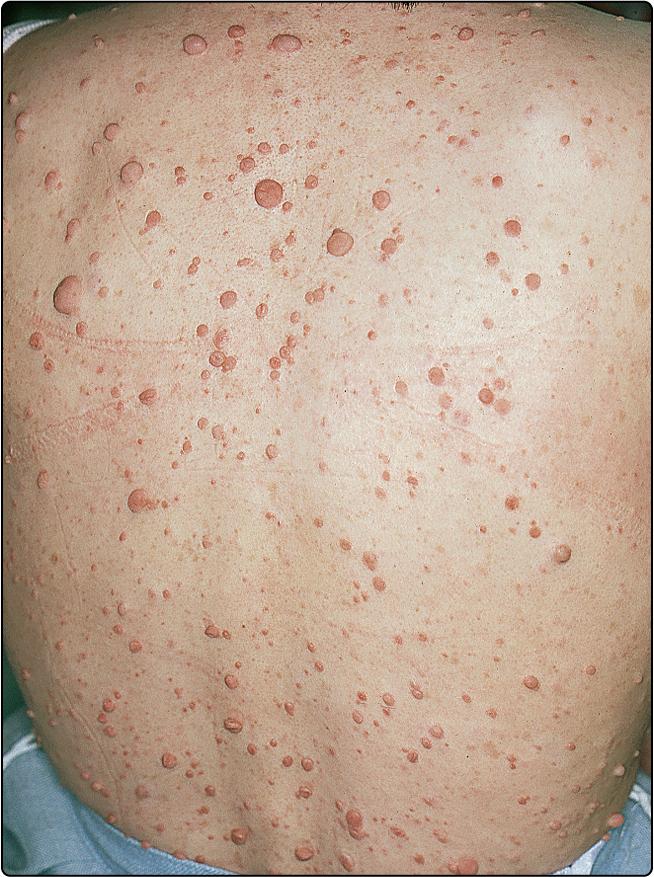Physical Address
304 North Cardinal St.
Dorchester Center, MA 02124
Certain inherited skin disorders also have significant involvement of internal organs. The neurocutaneous disorders, the inherited diseases of connective tissue and the premature ageing syndromes are included.
von Recklinghausen’s neurofibromatosis 1 (NF1) is relatively common, affecting about 1 in 3000 births. Café-au-lait spots, cutaneous neurofibromas and other bony or neurological abnormalities characterize NF1. The disease shows autosomal dominant inheritance, although 50% of cases are new mutations.
The NF1 gene is a tumour suppressor gene, mapped to chromosome 1. Prenatal screening for the NF1 gene is available by amniocentesis or chorionic villus biopsy.
The two main cutaneous features are:
Café-au-lait spots : round or oval coffee-coloured macules, due to increased melanin pigment. They often appear in the first year of life. One or two café-au-lait spots are seen in 10% of normal people but, in neurofibromatosis, six or more are usually present. Freckling of the axilla is also found ( Fig. 51.1 ).

Dermal neurofibromas : small nodules that appear during childhood and increase in number at the time of puberty ( Fig. 51.2 ). Their number varies from a few to several hundred.

A proportion of patients with NF1 have short stature and macrocephaly. Rare variants of the disease are occasionally seen. The commonest is NF2 ( central neurofibromatosis ), in which patients have bilateral acoustic neuromas but few, if any, café-au-lait spots or dermal nodules. NF2 also shows autosomal dominant inheritance. The NF2 gene is on chromosome 22.
Many patients with NF1 have a benign course, but complications can include:
Plexiform neurofibromas are larger than their dermal counterparts and measure up to several centimetres in size. They are associated with pigmentation and hypertrophy of the overlying skin or underlying bone, and present a cosmetic problem.
Benign tumours of the nervous system may develop. These include optic gliomas, acoustic neuromas and spinal neurofibromas that arise from nerve roots of the spinal cord.
Sarcomatous change in a neurofibroma, typically non-cutaneous, occurs in 1.5%–15% of cases.
Kyphoscoliosis (in 2%) or bowing of the tibia and fibula may occur.
Other problems include iris hamartomas (Lisch nodules), hypertension, epilepsy and learning difficulties.
Become a Clinical Tree membership for Full access and enjoy Unlimited articles
If you are a member. Log in here